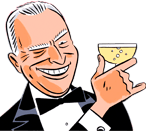Tony Judt was a very clever and learned Brit who taught in the Big Bagel and who died last August of that dreaded Lou Gehrig disease. He was extremely brave until the end, writing and lecturing from his wheelchair, and so convincing was he that some nice guys managed to ban him from speaking just before the end because of his opposition to Israeli policies. (They called him an anti-Semite, although Judt was Jewish, which is par for the course.)
Judt wrote an essay about ‘My endless New York’, which was a gem. At times I think only foreigners can catch the city’s pulse, New York, of course, not being America. A homogeneous quality is not what the city is made of. The finest thing about the place, we are told, is the variety of its sideshows. Sixty-five years or so ago, A.J. Liebling spoke for the city, writing about boxing and the man who laid out the gloves and headgear for the pugs at Stillman’s gym, or Hymie the Jew who operated sleazy clubs on 52nd street, or Miss Ira, ‘the Harlem modiste’ who sold turbans to ladies who liked to impress the men late at night.
Liebling insisted that there existed New Yorkers so submerged in one environment, such as the garment centre or Jack and Charlie’s, that they lived and died oblivious of the other worlds around them. I agree. I caught some of that separate world as a teenager, the Park Avenue swells who never ventured anywhere except to their clubs, and for weekends on Long Island, even when slumming; the Italians and Irish who lived side-by-side on the Lower East Side and in Hell’s Kitchen and who did manual work and went to baseball games on Saturdays and to church on Sundays; the rich ‘Negroes’ up in Harlem who never ventured south but lived in some splendid houses with beautiful women and were said to be gangsters; the Jews on 47th street, the diamond district, who were suspicious of the rest of us and probably had good reason to be.
Back then the New York accent was worn as a badge of honour by those who spoke Noo Yawkese, and treated as if it were leprosy by the Park Avenue lockjawed Wasps. Basically, New Yorkese was a bastardised version of the common speech of early 19th-century Cork, transplanted here during the mass immigration of the southern Irish 150 years ago. What I loved about the accent when I was young was the inability of Noo Yawkers to pronounce the letters th, using the letter d instead. Dis, dem, dose, dey, dat was de real Noo Yawk.
White swells and some not-so-swell went to Harlem in droves back then. For several years they packed the expensive Cotton Club on Lennox Avenue. It was a Jim Crow club, reserved for monied whites and Negro gangsters. The management was not cordial to Negro patronage, ‘unless you were a celebrity like Bojangles or Louis Armstrong’, as the great black essayist Langston Hughes put it. I remember well going up there, to Harlem, looking for black mamas who had some pretty hot girls under their thumb. I never got into trouble but, to be honest, I never looked for trouble either.
All this finished with the Sixties. The drugs turned Harlem into a war zone, with hulks of burnt-out buildings replacing the once fancy mansions and apartment blocks. Spanish Harlem, too, began to resemble the Berlin of 1945. Blacks turned to drugs en masse, and Puerto Ricans and Dominicans supplied them and fought turf wars among themselves. Politicians pretended not to notice, and the media were even worse. Black is beautiful, they kept repeating, too scared of being called racist to expose what drugs and lack of fathers were doing to the black family and community. Whites fled to the suburbs quicker than the Kuwaiti ruling gang ran away at the first sight of an Iraqi tank far on the horizon.
And yet. Fifty years later the place is different, much less charming, but nevertheless thriving. The swells are no longer, replaced by the rapacious beasts of Wall Street, the Jews, Italians and Irish now mixing freely with the blacks and Latinos, as they call themselves. New York has always been a world city, Chicago, as Tony Judt wrote, being the great American one. New York led the world in culture from 1945 until the Eighties, when the pursuit of the almighty dollar replaced everything, including culture, religion and apple pie.
Last weekend I drove through Harlem on my way to Connecticut and the place is once again gentrified, prettied up, yet violent. Drugs are rife. On my way out of the city I took stock. In the morning I walk across from my house to Kevin’s. Kevin was born in Trinidad and is as nice a gent as one hopes to meet in the city. He has my three dailies ready and we wisecrack with the mostly blacks purchasing lottery tickets. Next door two Uzbeki Jews run the shoe store where Equadorians and Mexicans shine shoes like no others. Just across them, Panayotis and Dimitris, two Greeks, cut hair, including mine, and Mila, from Moscow, takes care of nails and gives foot massages. An Italian trattoria, Sette et Mezzo, serves the best pasta in town, and a broken-down Wasp store sells the best antiques, and all this is within 25 yards of my tree-lined street. I have two maids, one Colombian, one Brazilian, an Irish–American secretary, my wife is German and I am an ancient Hellene. This is New York.






Comments